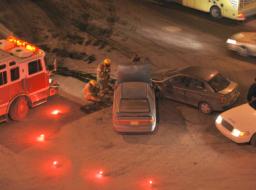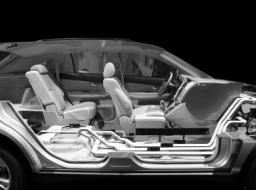Collision Severity
Collision severity is the quantification of the intensity of a car crash impact. In traffic accident reconstruction, the impact of interest is typically between two vehicles (e.g. automobile, truck, bus, motorcycle, or bicycle), between a vehicle occupant and the vehicle interior, between a vehicle and pedestrian, or between a vehicle and a fixed object (e.g. building, wall, tree, rock, or other roadside feature).
The most common collision severity index is delta-v. Delta-v is the change in velocity of the subject object (vehicle, occupant or pedestrian) during the collision event. In the United States, Delta-V is usually expressed in miles per hour, although kilometers per hour are also used in technical crash literature. A vehicle to vehicle collision event typically has a duration of less than 0.2 seconds (200 milliseconds). For example, if one car has a delta-v of 20 mph during a collision with another car, then that automobile experienced a change in speed of 20 mph over approximately 200 milliseconds or less.
Collision severity can also be expressed in terms of the amount of acceleration or deceleration of an object during an impact. In other words, the rate at which the delta-v takes place. The scientific units of this are in miles per hour per second or in feet per second per second. But most commonly it is just referred to as the number of G’s. One G is the equivalent of the acceleration due to the earth’s gravity, which is 32.2 feet per second per second. For example, an object that is dropped from some height and is in free fall, is accelerating downward at 1 G. During a hard braking maneuver, a vehicle is decelerating at about 0.5 G’s. In a collision between two vehicles, acceleration values can easily reach 20 G’s or more.
The significance of determining collision severity in an accident reconstruction is that it is an indicator of the probability of occupant injury. Clearly, the higher the delta-v or the greater the accelerations that are involved in a traffic collision, the greater the chances are that an occupant injury will occur.
The response of the human body when subjected to a collision with a quantified delta-v and principal direction of force forms the bases for biomechanical analyses and occupant protection system performance in a motor vehicle collision.









